Shows
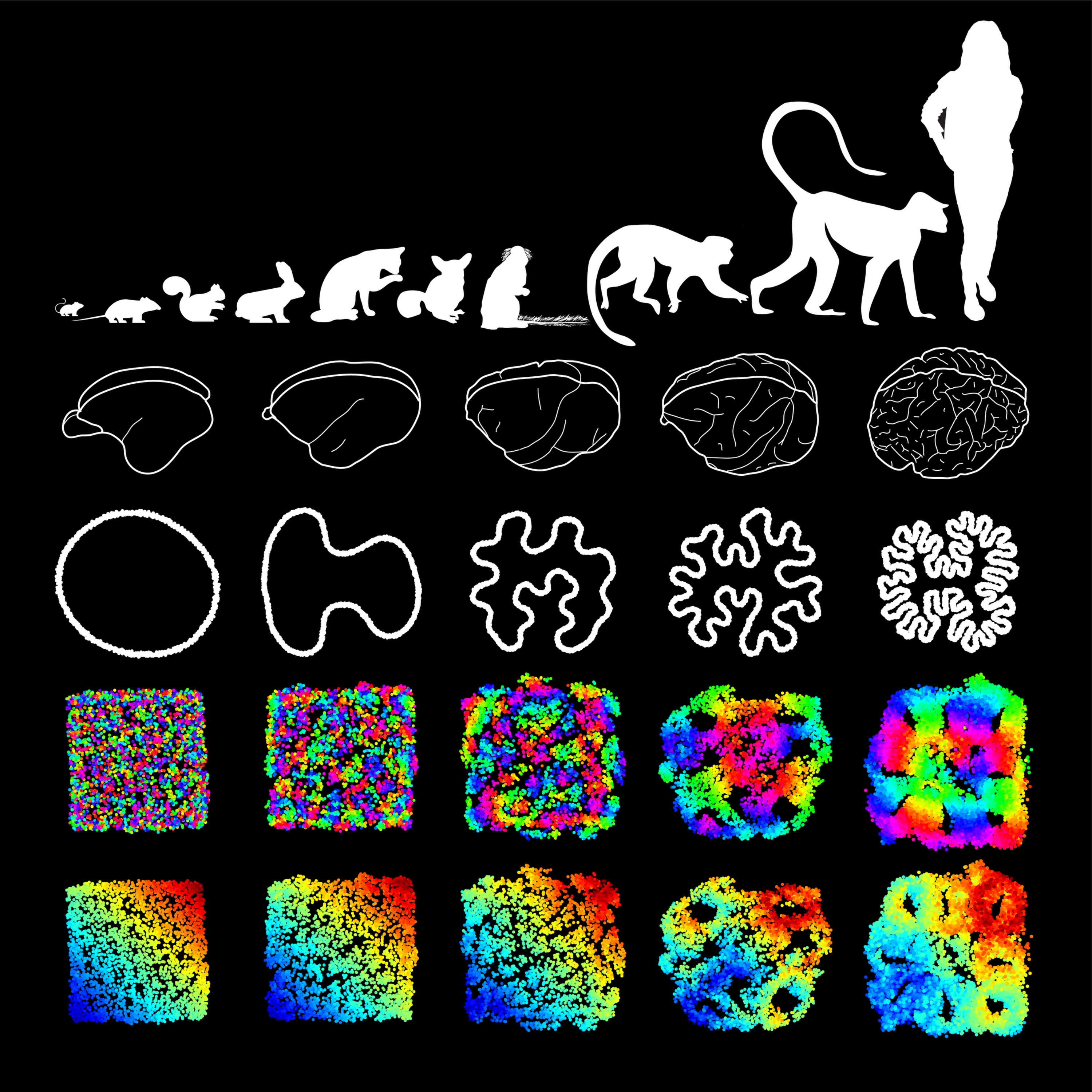 B5Y PodcastDiscussing "Neural Placement Based on Optimization Principles" by Dr. Marvin WeigandIn the fourth episode of Season 2 of the B5Y Podcast, we explore the third paper from Dr. Marvin Weigand’s PhD thesis: "Neural Placement Based on Optimization Principles." This episode focuses on the intriguing process of brain folding and what those wrinkles tell us about brain structure and function.Key topics include:How a computational model simulates brain development, revealing how the balance between local and global neuron connections shapes brain folding.Why larger brains tend to fold, and why a large-brained animal --- the manatee --- remain smooth-brained.Insights into brain disorders like lissencephaly and p...2024-09-2407 min
B5Y PodcastDiscussing "Neural Placement Based on Optimization Principles" by Dr. Marvin WeigandIn the fourth episode of Season 2 of the B5Y Podcast, we explore the third paper from Dr. Marvin Weigand’s PhD thesis: "Neural Placement Based on Optimization Principles." This episode focuses on the intriguing process of brain folding and what those wrinkles tell us about brain structure and function.Key topics include:How a computational model simulates brain development, revealing how the balance between local and global neuron connections shapes brain folding.Why larger brains tend to fold, and why a large-brained animal --- the manatee --- remain smooth-brained.Insights into brain disorders like lissencephaly and p...2024-09-2407 min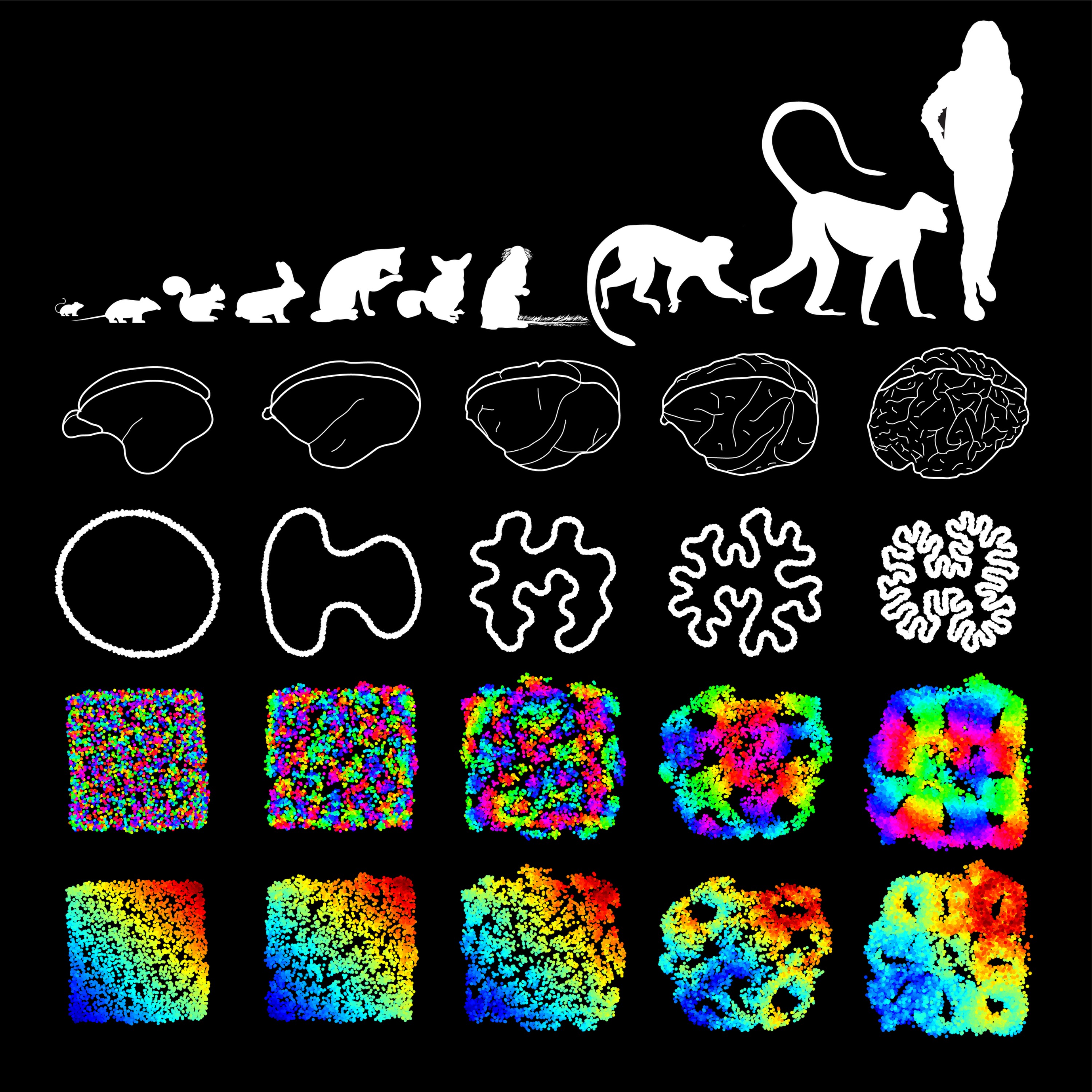 B5Y PodcastDiscussing "Neural Placement Based on Optimization Principles" by Dr. Marvin WeigandIn the third episode of Season 2 of the B5Y Podcast, we continue exploring Dr. Marvin Weigand’s PhD thesis, diving into the second paper: "Neural Placement Based on Optimization Principles." This episode focuses on how hypercolumns, the foundational units of the visual cortex, are remarkably consistent in size across different species, despite varying brain sizes.Key topics include:The structure of hypercolumns in the visual cortex and their role in processing visual information.How a fixed number of neurons within hypercolumns contributes to efficient visual processing across species, from mice to elephants.A novel computational model...2024-09-2410 min
B5Y PodcastDiscussing "Neural Placement Based on Optimization Principles" by Dr. Marvin WeigandIn the third episode of Season 2 of the B5Y Podcast, we continue exploring Dr. Marvin Weigand’s PhD thesis, diving into the second paper: "Neural Placement Based on Optimization Principles." This episode focuses on how hypercolumns, the foundational units of the visual cortex, are remarkably consistent in size across different species, despite varying brain sizes.Key topics include:The structure of hypercolumns in the visual cortex and their role in processing visual information.How a fixed number of neurons within hypercolumns contributes to efficient visual processing across species, from mice to elephants.A novel computational model...2024-09-2410 min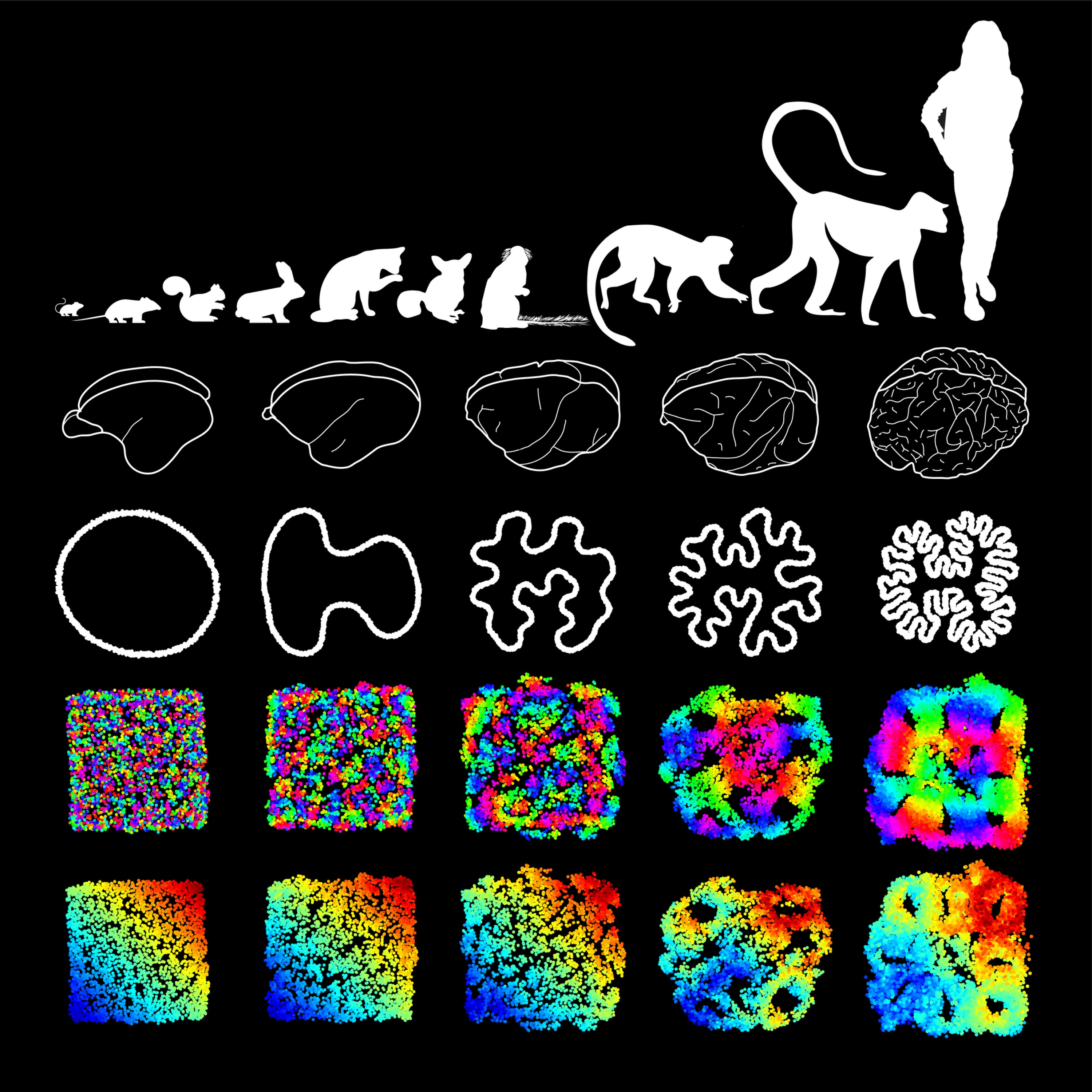 B5Y PodcastDiscussing "Neural Placement Based on Optimization Principles" by Dr. Marvin WeigandIn the second episode of Season 2 of the B5Y Podcast, we explore the first paper from Dr. Marvin Weigand’s PhD thesis: "Neural Placement Based on Optimization Principles." This episode is about how visual cortex maps form and how neuron density influences the organization of these maps, including the spontaneous emergence of pinwheel structures.Key topics include:Differences in visual cortex organization across species, particularly between highly organized primate maps and more scattered rodent structures.The role of neuron density in driving the formation of organized patterns in the brain, such as orientation-selective pinwheels.Insights from...2024-09-2408 min
B5Y PodcastDiscussing "Neural Placement Based on Optimization Principles" by Dr. Marvin WeigandIn the second episode of Season 2 of the B5Y Podcast, we explore the first paper from Dr. Marvin Weigand’s PhD thesis: "Neural Placement Based on Optimization Principles." This episode is about how visual cortex maps form and how neuron density influences the organization of these maps, including the spontaneous emergence of pinwheel structures.Key topics include:Differences in visual cortex organization across species, particularly between highly organized primate maps and more scattered rodent structures.The role of neuron density in driving the formation of organized patterns in the brain, such as orientation-selective pinwheels.Insights from...2024-09-2408 min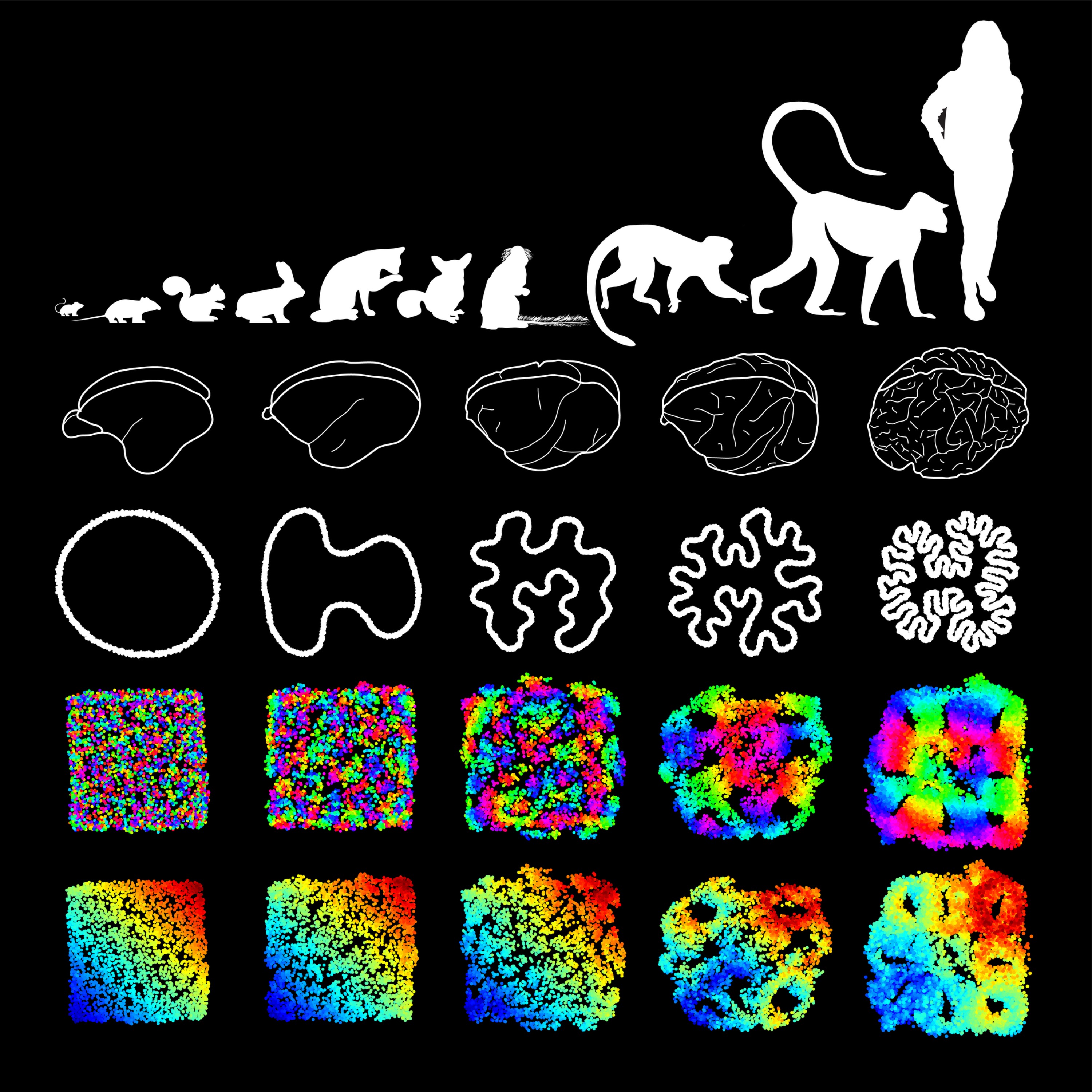 B5Y PodcastDiscussing "Neural Placement Based on Optimization Principles" by Dr. Marvin WeigandIn the Season 2 premiere of B5Y Podcast, we examine Dr. Marvin Weigand’s PhD thesis, "Neural Placement Based on Optimization Principles." This episode takes a closer look at how principles of efficiency guide the organization of neurons in the brain, from individual connections to large-scale structures.Key topics include:How the number of neurons impacts the complexity of neural maps in different species.The connection between cortical folding and neuron density in mammals, and how this influences brain efficiency.A model for predicting neuron placement based on optimizing wiring length and resource use.We discu...2024-09-2412 min
B5Y PodcastDiscussing "Neural Placement Based on Optimization Principles" by Dr. Marvin WeigandIn the Season 2 premiere of B5Y Podcast, we examine Dr. Marvin Weigand’s PhD thesis, "Neural Placement Based on Optimization Principles." This episode takes a closer look at how principles of efficiency guide the organization of neurons in the brain, from individual connections to large-scale structures.Key topics include:How the number of neurons impacts the complexity of neural maps in different species.The connection between cortical folding and neuron density in mammals, and how this influences brain efficiency.A model for predicting neuron placement based on optimizing wiring length and resource use.We discu...2024-09-2412 min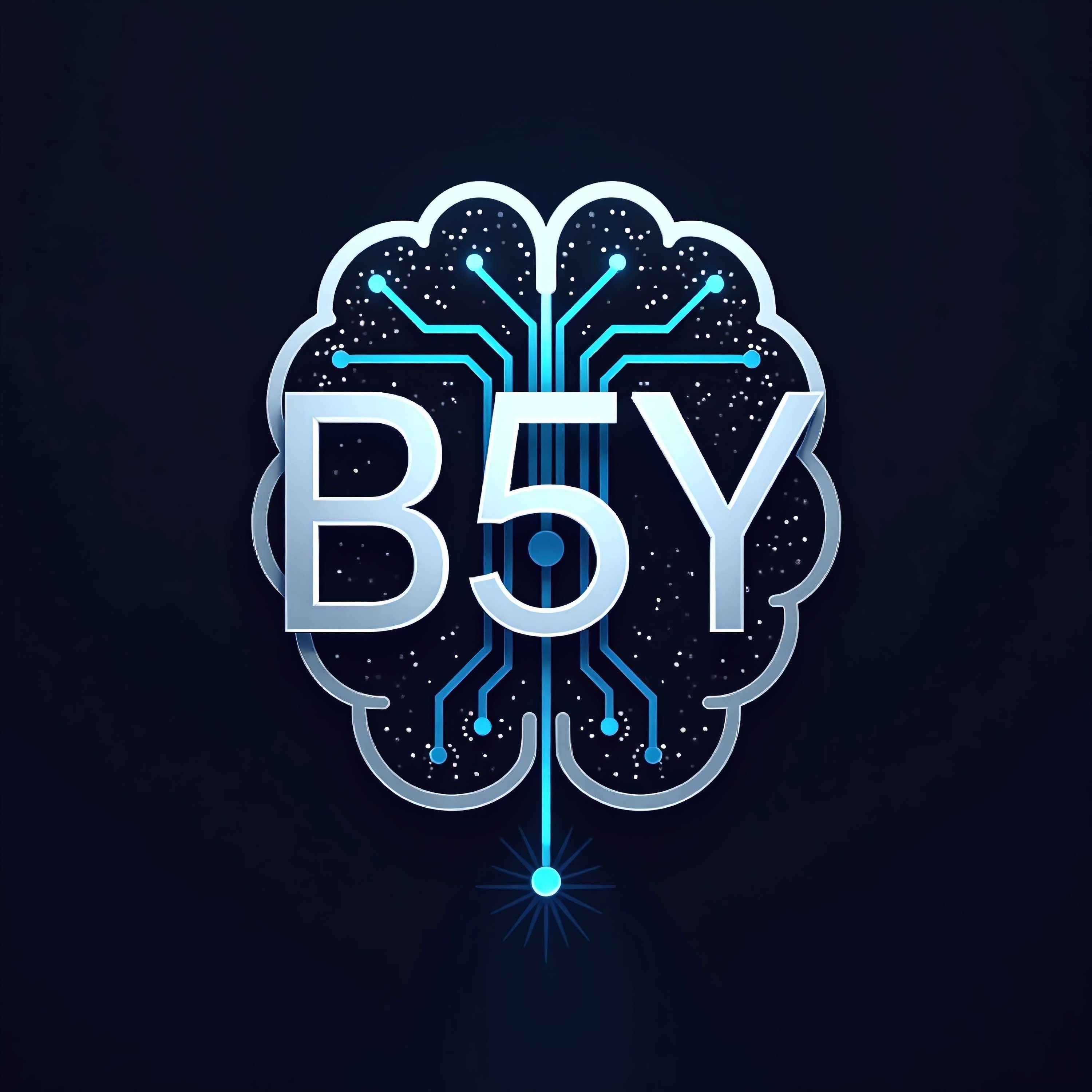 B5Y PodcastDiscussing "Situational Awareness" by Leopold AschenbrennerThis episode examines Part V: "Parting Thoughts" from Leopold Aschenbrenner's "Situational Awareness: The Decade Ahead" report. We synthesize the key themes and explore the urgent call to action presented in this former OpenAI insider's vision of our AI-driven future.Key points include:1. **The AI Revolution's Pace**: We discuss Aschenbrenner's prediction of machines surpassing human intelligence within the next decade, driven by exponential growth in computational power and algorithmic efficiency.2. **From Chatbots to AGI**: The episode explores the anticipated shift from current AI technologies to true artificial general intelligence (AGI) and...2024-09-2207 min
B5Y PodcastDiscussing "Situational Awareness" by Leopold AschenbrennerThis episode examines Part V: "Parting Thoughts" from Leopold Aschenbrenner's "Situational Awareness: The Decade Ahead" report. We synthesize the key themes and explore the urgent call to action presented in this former OpenAI insider's vision of our AI-driven future.Key points include:1. **The AI Revolution's Pace**: We discuss Aschenbrenner's prediction of machines surpassing human intelligence within the next decade, driven by exponential growth in computational power and algorithmic efficiency.2. **From Chatbots to AGI**: The episode explores the anticipated shift from current AI technologies to true artificial general intelligence (AGI) and...2024-09-2207 min B5Y PodcastDiscussing "Situational Awareness" by Leopold AschenbrennerThis episode focuses on Part IV: The Project from Leopold Aschenbrenner's report "Situational Awareness: The Next Decade." We examine the implications of Artificial General Intelligence (AGI) development, which experts anticipate could emerge this decade.Key topics include:Government Involvement: We explore the likelihood of secret government AI projects, the rationale for increased official oversight in AGI development, and draw parallels with historical initiatives like the Manhattan Project.Unified Command: The episode discusses the potential need for a centralized authority to guide AGI research and development, considering national security implications.From GPT-4 to AGI: We analyze recent...2024-09-2208 min
B5Y PodcastDiscussing "Situational Awareness" by Leopold AschenbrennerThis episode focuses on Part IV: The Project from Leopold Aschenbrenner's report "Situational Awareness: The Next Decade." We examine the implications of Artificial General Intelligence (AGI) development, which experts anticipate could emerge this decade.Key topics include:Government Involvement: We explore the likelihood of secret government AI projects, the rationale for increased official oversight in AGI development, and draw parallels with historical initiatives like the Manhattan Project.Unified Command: The episode discusses the potential need for a centralized authority to guide AGI research and development, considering national security implications.From GPT-4 to AGI: We analyze recent...2024-09-2208 min B5Y PodcastDiscussing "Situational Awareness" by Leopold AschenbrennerThis episode examines Part IIId: "The Free World Must Prevail" from Leopold Aschenbrenner's "Situational Awareness" report. We explore the potential impacts of superintelligence on national security and global power dynamics.Key points include:1. **Superintelligence as a Military Game-Changer**: Aschenbrenner argues that AI surpassing human intelligence could provide a decisive military advantage comparable to nuclear weapons.2. **Historical Parallel - The Gulf War**: We discuss Aschenbrenner's use of the Gulf War as a case study, illustrating how technological superiority led to a swift victory despite numerical disadvantages.3. **The Two-Year...2024-09-2210 min
B5Y PodcastDiscussing "Situational Awareness" by Leopold AschenbrennerThis episode examines Part IIId: "The Free World Must Prevail" from Leopold Aschenbrenner's "Situational Awareness" report. We explore the potential impacts of superintelligence on national security and global power dynamics.Key points include:1. **Superintelligence as a Military Game-Changer**: Aschenbrenner argues that AI surpassing human intelligence could provide a decisive military advantage comparable to nuclear weapons.2. **Historical Parallel - The Gulf War**: We discuss Aschenbrenner's use of the Gulf War as a case study, illustrating how technological superiority led to a swift victory despite numerical disadvantages.3. **The Two-Year...2024-09-2210 min B5Y PodcastDiscussing "Situational Awareness" by Leopold AschenbrennerThis episode examines Part IIIc: "Superalignment" from Leopold Aschenbrenner's "Situational Awareness" report. We explore the critical challenge of aligning superintelligent AI systems with human values and goals.Key points include:1. **Defining Superalignment**: We introduce the concept of superalignment - the task of ensuring that AI systems vastly more intelligent than humans remain aligned with our values and intentions.2. **The Scale of the Challenge**: Aschenbrenner argues that aligning a superintelligent AI is fundamentally more difficult than aligning current AI systems, due to the vast intelligence gap.3. **Complexity of...2024-09-2209 min
B5Y PodcastDiscussing "Situational Awareness" by Leopold AschenbrennerThis episode examines Part IIIc: "Superalignment" from Leopold Aschenbrenner's "Situational Awareness" report. We explore the critical challenge of aligning superintelligent AI systems with human values and goals.Key points include:1. **Defining Superalignment**: We introduce the concept of superalignment - the task of ensuring that AI systems vastly more intelligent than humans remain aligned with our values and intentions.2. **The Scale of the Challenge**: Aschenbrenner argues that aligning a superintelligent AI is fundamentally more difficult than aligning current AI systems, due to the vast intelligence gap.3. **Complexity of...2024-09-2209 min B5Y PodcastDiscussing "Situational Awareness" by Leopold AschenbrennerThis episode examines Part IIIb: "Lock Down the Labs: Securing the Future of AI" from Leopold Aschenbrenner's report. We explore the critical need for enhanced security measures in the race to develop Artificial General Intelligence (AGI).Key themes include:1. **Inadequate Security Protocols**: We discuss the alarming reality of insufficient security measures in leading AI labs, drawing parallels to the secrecy surrounding the Manhattan Project.2. **High Stakes of AGI Development**: The episode highlights AGI's potential impact on global power dynamics and humanity's future, emphasizing the need for stringent security.2024-09-2208 min
B5Y PodcastDiscussing "Situational Awareness" by Leopold AschenbrennerThis episode examines Part IIIb: "Lock Down the Labs: Securing the Future of AI" from Leopold Aschenbrenner's report. We explore the critical need for enhanced security measures in the race to develop Artificial General Intelligence (AGI).Key themes include:1. **Inadequate Security Protocols**: We discuss the alarming reality of insufficient security measures in leading AI labs, drawing parallels to the secrecy surrounding the Manhattan Project.2. **High Stakes of AGI Development**: The episode highlights AGI's potential impact on global power dynamics and humanity's future, emphasizing the need for stringent security.2024-09-2208 min B5Y PodcastDiscussing "Situational Awareness" by Leopold AschenbrennerThis episode examines Part IIIa: "Racing to the Trillion-Dollar Cluster" from Leopold Aschenbrenner's "Situational Awareness: The Decade Ahead" report. We explore the massive industrial mobilization required to support the development of increasingly powerful AI models, focusing on the economic and geopolitical implications of this unprecedented technological revolution.Key themes include:1. **Exponential Growth in AI Investment**: We discuss the skyrocketing investment in AI, driven by the promise of enormous economic returns. Annual spending is projected to reach trillions of dollars by the end of the decade.2. **The Trillion-Dollar Cluster**: As AI...2024-09-2214 min
B5Y PodcastDiscussing "Situational Awareness" by Leopold AschenbrennerThis episode examines Part IIIa: "Racing to the Trillion-Dollar Cluster" from Leopold Aschenbrenner's "Situational Awareness: The Decade Ahead" report. We explore the massive industrial mobilization required to support the development of increasingly powerful AI models, focusing on the economic and geopolitical implications of this unprecedented technological revolution.Key themes include:1. **Exponential Growth in AI Investment**: We discuss the skyrocketing investment in AI, driven by the promise of enormous economic returns. Annual spending is projected to reach trillions of dollars by the end of the decade.2. **The Trillion-Dollar Cluster**: As AI...2024-09-2214 min B5Y PodcastDiscussing "Situational Awareness" by Leopold AschenbrennerIn this episode, we examine the section "II. From AGI to Superintelligence: The Intelligence Explosion" from Leopold Aschenbrenner's essay "Situational Awareness." This excerpt posits that AI progress will not stop at the human level, but will accelerate exponentially once AI systems are capable of automating AI research. Aschenbrenner compares this transition to the shift from the atomic bomb to the hydrogen bomb – a turning point that illustrates the perils and power of superintelligence.Using the example of AlphaGo, which developed superhuman capabilities by playing against itself, it illustrates how AI systems could surpass human performance.Once we achieve AG...2024-09-2206 min
B5Y PodcastDiscussing "Situational Awareness" by Leopold AschenbrennerIn this episode, we examine the section "II. From AGI to Superintelligence: The Intelligence Explosion" from Leopold Aschenbrenner's essay "Situational Awareness." This excerpt posits that AI progress will not stop at the human level, but will accelerate exponentially once AI systems are capable of automating AI research. Aschenbrenner compares this transition to the shift from the atomic bomb to the hydrogen bomb – a turning point that illustrates the perils and power of superintelligence.Using the example of AlphaGo, which developed superhuman capabilities by playing against itself, it illustrates how AI systems could surpass human performance.Once we achieve AG...2024-09-2206 min B5Y PodcastDiscussing "Situational Awareness" by Leopold AschenbrennerIn this episode, we take a deep dive into the section “I. From GPT-4 to AGI: Counting the OOMs” from Leopold Aschenbrenner’s essay Situational Awareness. This excerpt focuses on the rapid advancements in AI driven by improvements in deep learning models. Aschenbrenner argues that we are on the path to achieving Artificial General Intelligence (AGI) by 2027, using the concept of counting the Orders of Magnitude (OOMs) to illustrate the exponential increases in computational power propelling these models.We discuss the significant leaps from GPT-2 to GPT-4, driven by three key factors: increased computational power, enhanced algorithmic...2024-09-2215 min
B5Y PodcastDiscussing "Situational Awareness" by Leopold AschenbrennerIn this episode, we take a deep dive into the section “I. From GPT-4 to AGI: Counting the OOMs” from Leopold Aschenbrenner’s essay Situational Awareness. This excerpt focuses on the rapid advancements in AI driven by improvements in deep learning models. Aschenbrenner argues that we are on the path to achieving Artificial General Intelligence (AGI) by 2027, using the concept of counting the Orders of Magnitude (OOMs) to illustrate the exponential increases in computational power propelling these models.We discuss the significant leaps from GPT-2 to GPT-4, driven by three key factors: increased computational power, enhanced algorithmic...2024-09-2215 min 5th World Sepsis Congress: Sepsis Research and Innovations34: 2nd WSC – Evidence Based Treatment of Sepsis IISession ‘Evidence Based Treatment of Sepsis II’ from the 2nd World Sepsis Congress. Featuring Peter Hjortrup, Naomi Hammond, Yasser Sakr, John Myburgh, Anders Perner, Didier Payen, and Markus Weigand as chair. More info: www.worldsepsiscongress.org2018-11-151h 39
5th World Sepsis Congress: Sepsis Research and Innovations34: 2nd WSC – Evidence Based Treatment of Sepsis IISession ‘Evidence Based Treatment of Sepsis II’ from the 2nd World Sepsis Congress. Featuring Peter Hjortrup, Naomi Hammond, Yasser Sakr, John Myburgh, Anders Perner, Didier Payen, and Markus Weigand as chair. More info: www.worldsepsiscongress.org2018-11-151h 39